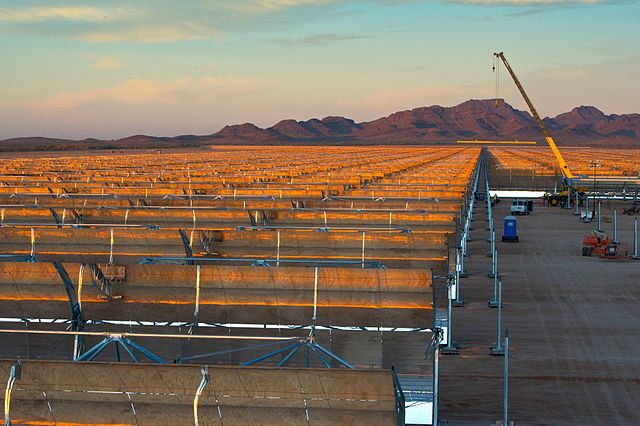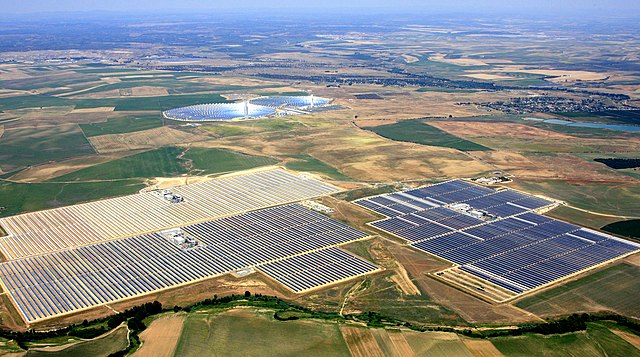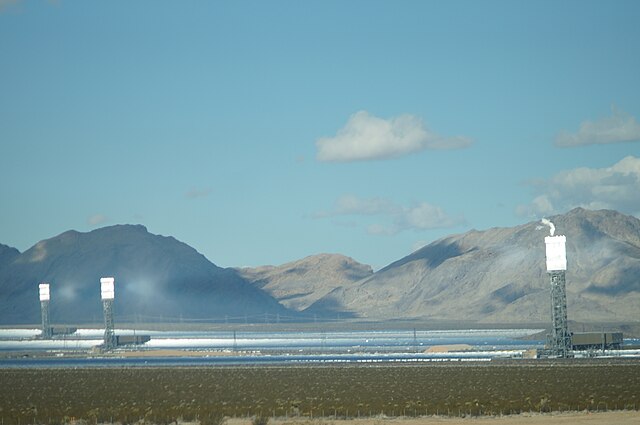Solana Generating Station
The Solana Generating Station is a solar power plant near Gila Bend, Arizona, about 70 miles (110 km) southwest of Phoenix. It was completed in 2013. When commissioned, it was the largest parabolic trough plant in the world, and the first U.S. solar plant with molten salt thermal energy storage. Built by the Spanish company Abengoa Solar, the project can produce up to 280 megawatts (MW) gross, supplied by two 140 MW gross (125 MW net) steam turbine generators: enough electricity to meet the needs of approximately 70,000 homes and obviate the emission of roughly 475,000 tons of CO2 every year. Its name is the Spanish term for "sunny spot".
The project's array of parabolic mirrors
Construction of the Salt Tanks
Solar power, also known as solar electricity, is the conversion of energy from sunlight into electricity, either directly using photovoltaics (PV) or indirectly using concentrated solar power. Solar panels use the photovoltaic effect to convert light into an electric current. Concentrated solar power systems use lenses or mirrors and solar tracking systems to focus a large area of sunlight to a hot spot, often to drive a steam turbine.
Rooftop solar in Hong Kong
The first three concentrated solar power (CSP) units of Spain's Solnova Solar Power Station in the foreground, with the PS10 and PS20 solar power towers in the background
The 40.5 MW Jännersdorf Solar Park in Prignitz, Germany
Ivanpah Solar Electric Generating System with all three towers under load






